I am currently trying to customize my plot with the goal to have a plot like this:
If I try to specify the color or linetype in either aes() or mapping = aes(), I get two different smooths. One for each class. This makes sense, because the smoothing will be applied once for each type.
If I use group = 1 in the aestetics, I will get one line, also one color/linetype.
But I can not find a solution to have one smooth line with different colors/linetypes for each class.
My code:
ggplot(df2, aes(x = dateTime, y = capacity)) +
#geom_line(size = 0) +
stat_smooth(geom = "area", method = "loess", show.legend = F,
mapping = aes(x = dateTime, y = capacity, fill = type, color = type, linetype = type)) +
scale_color_manual(values = c(col_fill, col_fill)) +
scale_fill_manual(values = c(col_fill, col_fill2))
Reproduceable code:
File: enter link description here (I can not make this file shorter and copy it hear, else I get errors with smoothing for too few data points)
df2 <- read.csv("tmp.csv")
df2$dateTime <- as.POSIXct(df2$dateTime, format = "%Y-%m-%d %H:%M:%OS")
col_lines <- "#8DA8C5"
col_fill <- "#033F77"
col_fill2 <- "#E5E9F2"
ggplot(df2, aes(x = dateTime, y = capacity)) +
stat_smooth(geom = "area", method = "loess", show.legend = F,
mapping = aes(x = dateTime, y = capacity, fill = type, color = type, linetype = type)) +
scale_color_manual(values = c(col_fill, col_fill)) +
scale_fill_manual(values = c(col_fill, col_fill2))


